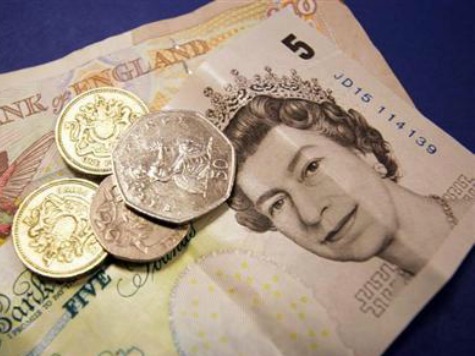With much of the news flow likely to be dictated by events as they unfold in the Ukraine, the markets are most likely going to be highly volatile and responsive to every new major development. This has already been evidenced by a 100 point drop in the FTSE 100 this morning at the open.
Nevertheless, aside from maintaining a watchful eye on events in the Crimea and (potentially) Eastern Ukraine, there are a few highlights to keep an eye out for this week as far as economic indicators go.
Mon 3rd March, US Personal income (13:30 GMT) forecast rise of 0.2 percent m/m:
Although inflation in the US ran at a low 1.5 percent for 2013, the simple fact is that it will feel to many like inflation is running quicker than that if their wages aren’t keeping pace with it.
With a median forecast of a rise of 0.2 percent for January, it’s likely this mood will persist – though it would represent a slight pickup from no change in December and the 0.1 percent decline in October.
Nevertheless, there are signs the economy is slowing, with most measures of construction starting to lose some momentum, and GDP growth for Q4 of 2013 having been revised down to 2.4 percent (from a previous estimate of 3.2 percent).
Given that a large part of this drop was a slowing in consumption expenditure, this may very well suggest consumers aren’t feeling much better off.
The result is that stock building of inventories is likely to slow down.
Tue 4th March, Euro Zone Producer Prices (10:00 GMT) forecast decline of 1.3 percent:
You’ll probably have gathered by now that I attach a degree of importance to the inflation figures. That’s because the Eurozone appears to be careering towards deflation, with Germany and France having recorded negative numbers for their PPI measure of inflation (down 0.1 percent and 0.6 percent respectively).
If the ECB is to avert a Japanese style bout of deflation, it’s highly likely they will have to find a way of embarking on Quantitative Easing in Europe that expands the money supply – something they have been unable to do thus far.
With a decline of 1.3 percent being forecast across the region, it seems likely that the pressure will continue to mount.
Wed 5th March, Australian GDP figures (00:30 GMT) forecast annual rise of 2.5 percent:
A number of factors should have worked in Australia’s favour to ensure that the Q4 GDP figure is a reasonable figure (forecast of 0.7 percent).
A falling Aussie Dollar, stabilising commodity prices and Chinese GDP growth seemingly holding firm with 7.7 percent growth forecast for 2014 will likely ensure that commodities – which account for over half of Australia’s exports – should have made a positive contribution to economic activity.
Even so, the figures are expected to confirm the economy remains hostage to commodity prices and Chinese demand with residential construction and non-mining capital expenditure both likely to be disappointing.
Thurs 6th March, Russian Central Bank weekly reserves (00:00 GMT) & ECB rate meeting (12:45GMT) :
Normally a figure that is presented with little fanfare, you can bet that the details of Russia’s Foreign Currency reserves position will not be the case this week.
With Russia burning through its reserves having spent $10 billion over the weekend to defend the Rouble in addition to the $7 billion spent doing so in January, the United States will be well aware that this could become an area of worry for the Russian Federation in a protracted diplomatic (or armed) conflict.
The current figure of $490 billion is down from a high of near $540 billion back in January last year (representing a 9.3 percent drop) and unless interest rate hikes can stem the outflow of funds from Russia, they will be incredibly wary of provoking a conflict that would trigger a bundle to the exit for foreign investors and potential sources of foreign currency.
This may well be more important than any diplomatic efforts or sable rattling we’re seeing at present.

Furthermore, we also have the ECB meeting which may give some indication as to whether or not Mario Draghi believe deflation is a likely and what prospects there are for monetary easing- something he has ruled out unless political pressure eases.
A dovish statement would likely send the Euro on a decline against other currencies.
Friday 7th March, US Non-farm payrolls (13:30 GMT) forecast 150,000:
The forecast rise of 150,000 would represent an increase from 113,000 the previous month and would surely point to another month of tapering.
It would surely take a significant slip to alter the trajectory of $10bn monthly reductions, though the overall unemployment rate is expected to remain unchanged at 6.6 percent.
With momentum across a number of indicators slowing (not least a sharp downward revision to 2013 Q4 GDP) there may be potential for the rise to fall short of the 150,000 forecast.
Interesting chart of the week:
Just how much has the S&P’s rise been underpinned by borrowed money following it reached all-time highs of 1,859 last week?
With margin debt having risen more than 20 percent over the last year it is also above the levels seen in 2007. This is significant because high levels of trading on margin are often seen as a precursor to a crash – especially if interest rates begin to rise and the related charges (rollover costs) begin to increase.
This chart illustrates just how much the rally has been fuelled by borrowing the fund purchases on margin.


COMMENTS
Please let us know if you're having issues with commenting.